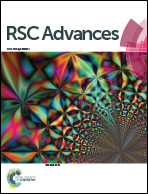Coupling the magnetic and heat dissipative properties of Fe3O4 particles to enable applications in catalysis, drug delivery, tissue destruction and remote biological interfacing
Abstract
As interest in nanomaterials continues to grow, and the scope of their applications widens, one subset of materials has set itself apart: magnetic nanoparticles (MNPs). Two unique properties of MNPs, their ability to move under the influence of an external magnetic field, and their propensity to dissipate heat upon exposure to an alternating, radio-frequency signal have enabled widespread applications in catalysis, drug delivery, tissue destruction and remote biological interfacing. Many of the uses rely either on the movement or the heating, though this review focuses on cutting edge research from recent years that has begun to develop applications that couple these two properties unique to MNPs. The more these properties are coupled, the more we can achieve a greater complexity of function with a reduced complexity of form.


 Please wait while we load your content...
Please wait while we load your content...